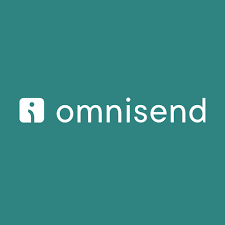Welcome to the digital age, where email marketing remains a titan in the world of business communication and customer engagement. It’s 2024, and the competition between email marketing tools is fiercer than ever. Two giants, Moosend and Omnisend, are vying for the top spot. But which one will give you the edge in this ever-evolving market? Let’s dive in and compare these two powerhouses, focusing on one key aspect to start: Automation Capabilities.
| Moosend | Omnisend |
|---|---|
 |  |
| G2 Score – 4.6 out of 5 stars | G2 Score – 4.5 out of 5 stars |
| TrustRadius Score – 9.8 out of 10 | TrustRadius Score – 6.0 out of 10 |
Automation Capabilities: Moosend vs Omnisend
In today’s fast-paced digital marketplace, automation is not just a luxury; it’s a necessity. Imagine having a virtual assistant that not only understands your customers but also knows exactly when and how to reach out to them. That’s the power of email marketing automation. It’s like setting up a domino effect where one action triggers another, ensuring your marketing runs smoothly while you focus on other aspects of your business.
Moosend’s Magic: Simplifying Complexity
Moosend steps into the ring with a reputation for making complex automation sequences feel like a walk in the park. Their platform offers an intuitive drag-and-drop editor that turns the daunting task of creating automated email sequences into a straightforward and enjoyable process. Picture this: you’re mapping out a customer’s journey with just a few clicks, designing personalized experiences based on subscriber actions without needing to code or face complicated setups.
But what really sets Moosend apart in automation? It’s their precision in targeting and segmentation. You can slice and dice your audience into specific groups based on their behavior, preferences, and past interactions. This means you’re not just sending emails; you’re sending the right emails to the right people at the right time.
Let’s say a customer abandons their cart on your e-commerce site. Moosend recognizes this, and like a digital superhero, swoops in with a tailored email nudging the customer back to complete their purchase. It’s this level of detailed attention and customization that can skyrocket your conversion rates.
Omnisend’s Oomph: Multichannel Mastery
Omnisend enters the battle with a different weapon – its multichannel approach. While Moosend excels in email automation, Omnisend takes it a step further by integrating multiple channels like SMS, push notifications, and even Facebook Messenger into its automation sequences. This isn’t just email marketing; it’s an all-in-one communication strategy.
Imagine you’re running a promotional campaign. With Omnisend, you’re not limited to just emails. You can set up an automated sequence that starts with an email, follows up with an SMS, and then retargets with a Facebook Messenger message. This multichannel strategy increases the chances of your message being seen and acted upon.
Moreover, Omnisend’s analytics and reporting are top-notch. You get detailed insights into how your campaigns perform across different channels, allowing you to fine-tune your strategy for maximum impact. Their reports go beyond open rates and click-throughs; they delve into how each channel contributes to your sales and conversion goals.
Making the Choice: Which Suits You Best?
Deciding between Moosend and Omnisend for automation comes down to your business needs. If you’re looking for an easy-to-use, email-focused tool with powerful segmentation and personalization capabilities, Moosend is your go-to. However, if your strategy involves a broader range of communication channels and you need insights into multi-channel performance, Omnisend might be the better fit.
User Experience: Navigating Moosend and Omnisend
The ease of using an email marketing tool can significantly influence your daily productivity and overall marketing effectiveness. A tool that’s a breeze to navigate can make the difference between a campaign that’s swiftly executed and one that’s stuck in the pipeline due to technical hiccups. That’s where the user experience (UX) of Moosend and Omnisend comes into the spotlight.
Moosend’s User-Friendly Interface: Designed for Simplicity
Moosend is renowned for its user-friendly interface. It’s designed for users who may not be tech-savvy but are looking for a powerful tool to handle their email marketing needs. The platform is straightforward, with a clean, uncluttered dashboard that makes finding features a snap.
Imagine you’re creating your first email campaign. With Moosend, this process is intuitive. The drag-and-drop email editor is a standout feature, allowing you to design professional-looking emails without needing any design skills. Templates load quickly, and customizing them is as simple as clicking and editing. This ease of use extends to their list management and segmentation features, making it easy to manage your contacts without feeling overwhelmed.
Omnisend’s Rich Feature Set: A Slight Learning Curve
Omnisend, on the other hand, packs a punch with its rich feature set designed for more advanced users. This doesn’t mean it’s overly complex, but there’s a slight learning curve, especially if you’re planning to use its full range of features like multichannel campaigns and extensive automation.
The platform’s interface is clean, but with the added capabilities comes additional layers of navigation. For instance, setting up an omnichannel campaign might require a few extra steps compared to a straightforward email campaign in Moosend. However, once you get the hang of it, these steps are logical and contribute to a powerful marketing approach.
The depth of Omnisend’s features is where its UX shines. The platform offers advanced options like audience segmentation based on shopping behavior and campaign performance analysis across different channels, which, while initially daunting, provide invaluable insights for optimizing your marketing strategies.
Choosing Based on UX Needs
Your choice between Moosend and Omnisend in terms of UX depends largely on your comfort level with technology and the complexity of your marketing campaigns. If you prefer simplicity and a more straightforward approach to email marketing, Moosend is likely your best bet. But if you’re comfortable with a slight learning curve and seek a more robust, feature-rich platform, Omnisend could be the ideal choice.
Pricing and Plans: Moosend vs Omnisend
When it comes to selecting an email marketing tool, pricing plays a crucial role. It’s not just about the cheapest option; it’s about finding the right balance between cost and features. A tool that’s affordable but lacks essential features is no bargain, just as an expensive tool with more features than you need isn’t a wise investment. Let’s compare Moosend and Omnisend in terms of their pricing structures and what they offer.
| Moosend | Free Plan: Offers access to basic features for up to 1,000 subscribers, including email campaigns, automation, and landing pages. Pro Plan: Pricing starts at $8 per month for up to 2,000 subscribers, with unlimited emails. Includes advanced features like transactional emails, landing page builder, and phone support. The price scales with the number of subscribers. Enterprise Plan: Custom pricing for businesses needing custom features like account management, SSO (Single Sign-On), and more. |
| Omnisend | Free Plan: Includes basic email marketing features, allowing up to 15,000 emails per month but with a daily limit. Standard Plan: Starts around $16 per month for up to 500 subscribers, including automation workflows, SMS campaigns, and audience segmentation. Pro Plan: Starting from around $99 per month for up to 500 subscribers, adding features like advanced reporting, web push notifications, and unlimited emails. Enterprise Plan: Custom pricing for large-scale businesses, offering features like dedicated account management, deliverability support, and custom IP address. |
Moosend’s Pricing: Affordability Meets Flexibility
Moosend is often celebrated for its competitive pricing, making it an attractive option for small businesses and startups. The platform offers a free plan, which is a big draw for those just starting out or with minimal email marketing needs. This free plan includes access to most of Moosend’s key features, although there is a limit on the number of subscribers and email sends.
As your business grows, Moosend’s pricing scales with you. Their paid plans are based on the number of subscribers, and the costs are transparent and predictable. What’s great about Moosend’s pricing is its flexibility – you can choose a monthly plan or opt for an annual subscription for additional savings.
The affordability of Moosend does not mean a compromise on features. Even on its lower-tier plans, you get access to advanced automation, segmentation, and reporting features. This makes Moosend an excellent value-for-money option, especially for businesses that primarily focus on email marketing.
Omnisend’s Pricing: Comprehensive Features at a Premium
Omnisend takes a different approach. While it also offers a free plan, the focus is more on providing a comprehensive set of features, including its multichannel capabilities. The free plan is somewhat limited, mainly serving as a trial for the platform’s basic functions.
The real power of Omnisend is unlocked in its paid plans, which are priced higher than Moosend’s. These plans are structured based on the number of subscribers and the features you need. Omnisend’s pricing reflects its advanced features, including the integration of SMS and other channels into your marketing campaigns, as well as more sophisticated segmentation and analytics tools.
For businesses that are looking for an all-in-one platform to manage multiple channels of communication and have a budget to match, Omnisend’s pricing can be justified. It’s an investment in a comprehensive tool that can handle not just email marketing but a broader range of digital marketing needs.
Making the Best Financial Decision for Your Business
Deciding between Moosend and Omnisend based on pricing comes down to your business’s size, needs, and budget. Moosend is an excellent choice for those who want a powerful yet affordable email marketing tool. It’s ideal for businesses that are primarily focused on email and need a straightforward, cost-effective solution.
On the other hand, if your business requires a more robust, multichannel approach and you’re willing to invest more for a broader range of features, Omnisend might be the better option. Its higher price tag is offset by its comprehensive tools and capabilities, especially if you’re looking to integrate email with SMS, social media, and other channels.

Related: Check out our free SEO suite

Integrations and Support: Moosend vs Omnisend
Integrations and support are like the backbone of any email marketing tool. Integrations expand your tool’s capabilities by seamlessly connecting with other applications you use, enhancing functionality and efficiency. Support, on the other hand, is your safety net, ensuring you can resolve issues quickly and make the most of the tool’s features. Let’s see how Moosend and Omnisend fare in these crucial areas.
Moosend’s Integration Ecosystem and Customer Support
Moosend might not boast the largest integration ecosystem, but it covers all the essentials. It integrates smoothly with popular CRM software, e-commerce platforms, and lead capture tools. These integrations are straightforward, allowing even those with limited technical skills to connect their favorite tools without much hassle.
Where Moosend truly shines is in its customer support. They offer a range of support options, including email, live chat, and a comprehensive knowledge base. Their response times are commendable, and users often praise the quality of support provided. This is a big plus, especially for smaller businesses or those new to email marketing, as it ensures you can get help whenever you need it.
The combination of essential integrations and strong customer support makes Moosend a reliable choice for businesses that need a straightforward, effective email marketing solution with the backing of responsive support.
Omnisend’s Robust Integrations and Advanced Support
Omnisend takes integrations a step further. It boasts a more extensive list of integrations, catering to a wide range of e-commerce platforms, CRM systems, and third-party apps. This extensive integration network is particularly beneficial for businesses that rely on a variety of tools and need their email marketing platform to seamlessly fit into their existing tech stack.
In terms of support, Omnisend also offers multiple channels, including 24/7 live chat, email support, and a comprehensive knowledge base. What sets them apart is the depth of their support. Omnisend offers more detailed guidance and support for its advanced features, which is invaluable for businesses utilizing its full range of capabilities.
Their advanced support is especially beneficial for larger businesses or those with more complex email marketing needs. It ensures that users can fully leverage Omnisend’s extensive features and integrations to create sophisticated, multichannel marketing campaigns.
Choosing the Right Support and Integration Framework for Your Business
Your choice between Moosend and Omnisend in terms of integrations and support will depend on the complexity of your marketing needs and the level of support you anticipate requiring.
If your needs are straightforward and you value simplicity and responsive support for essential integrations, Moosend is a great choice. Its user-friendly approach and strong customer support make it a reliable option for small to medium-sized businesses.
However, if your business demands a broader range of integrations and you’re looking for a tool that can support advanced, multichannel marketing strategies, Omnisend’s extensive integration capabilities and in-depth support will likely be more suited to your needs.
Analytics and Reporting: Moosend vs Omnisend
In the realm of email marketing, analytics and reporting are not just about numbers; they are the compass that guides your marketing strategies. Detailed analytics help you understand your audience, gauge the effectiveness of your campaigns, and make data-driven decisions. Let’s dive into how Moosend and Omnisend stack up in providing these crucial insights.
Moosend’s Analytics: Clarity and Simplicity
Moosend offers a robust analytics platform that strikes a balance between simplicity and depth. Their reporting features provide clear insights into key metrics such as open rates, click-through rates, and unsubscribe rates. This information is presented in an easy-to-understand format, making it accessible even to those new to email marketing.
One of Moosend’s standout analytics features is its real-time tracking. You can see how your campaigns perform as soon as they are launched, allowing for quick adjustments. Additionally, Moosend provides detailed insights into subscriber behavior, such as which links are clicked most frequently and at what times your emails are opened. This level of detail helps in fine-tuning your future campaigns for better engagement.
Moosend also includes A/B testing tools, enabling you to test different elements of your emails, such as subject lines or content layouts, to see what resonates best with your audience. This feature is crucial for optimizing your emails for higher engagement rates.
Omnisend’s Reporting: Comprehensive and Multichannel
Omnisend takes analytics and reporting to a higher level, particularly in terms of its multichannel capabilities. In addition to the standard email analytics, Omnisend provides detailed reports on how each channel (email, SMS, push notifications) is performing in your overall marketing strategy. This comprehensive view is invaluable for businesses using a multichannel approach.
Omnisend’s analytics also delve deeper into customer segmentation. You can track how different segments respond to your campaigns, which is critical for personalizing and tailoring your marketing efforts. The platform also offers advanced reporting features like campaign ROI and customer lifecycle stages, providing insights that go beyond basic email metrics.
Like Moosend, Omnisend includes A/B testing, but with a broader scope due to its multichannel nature. This allows for more intricate testing across different channels and formats, giving you a better understanding of how to engage your audience effectively across the board.
Making the Right Choice for Your Data Needs
Choosing between Moosend and Omnisend for analytics and reporting depends on the complexity of the data you need and how you intend to use it.
If you’re looking for straightforward, easy-to-digest analytics that provide a clear overview of your email campaigns, Moosend is an excellent choice. It offers all the essential analytics in a user-friendly format, perfect for businesses that want simplicity without sacrificing insight.
On the other hand, if your business demands comprehensive, multichannel analytics and you need deeper insights into customer behavior and campaign performance across various platforms, Omnisend is the way to go. Its advanced reporting capabilities will provide the detailed data necessary to drive a sophisticated, data-driven marketing strategy.
Email Template Design and Customization: Moosend vs Omnisend
Email design is more than just aesthetics; it’s a crucial element that can significantly impact the success of your marketing campaigns. The right design can capture attention, convey your message effectively, and encourage reader engagement. Let’s examine how Moosend and Omnisend cater to this critical aspect of email marketing.
Moosend’s Design Flexibility: Catering to Creativity
Moosend shines when it comes to template design and customization. It offers a rich library of email templates that cater to a wide range of industries and occasions. These templates are not only visually appealing but also highly customizable, allowing businesses to infuse their brand identity into each email.
The platform’s drag-and-drop editor is a highlight, making it incredibly easy to design emails without any coding knowledge. You can adjust layouts, add elements like images and buttons, and modify colors and fonts to match your brand’s style. This flexibility is perfect for businesses that want to create unique, branded emails without investing in a graphic designer.
Moreover, Moosend’s responsive design ensures that emails look great on any device, which is essential in today’s mobile-dominated world. Their templates automatically adjust to fit different screen sizes, ensuring your messages are always reader-friendly.
Omnisend’s Template Variety: Multichannel Consistency
Omnisend also offers a robust selection of email templates, with a focus on consistency across different marketing channels. Their templates are designed to be cohesive with your brand’s presence not only in emails but also in SMS and social media channels.
The strength of Omnisend’s design capabilities lies in its ability to maintain brand consistency across various platforms. This is particularly important for businesses that use a multichannel approach and need to ensure a uniform brand experience for their customers.
While Omnisend’s templates are also customizable, the platform excels in providing options that align well with e-commerce and retail businesses. Their templates are optimized for conversions, featuring elements like product recommendations and dynamic content blocks that can be personalized based on customer data.
Choosing the Right Tool for Email Design
The decision between Moosend and Omnisend in terms of email design depends largely on your specific needs and goals.
If you prioritize creative freedom and flexibility in designing unique, brand-centric emails, Moosend’s user-friendly design tools and extensive template library will be very appealing. It’s ideal for businesses that want to stand out with custom-designed emails.
On the other hand, if your focus is on maintaining brand consistency across multiple channels and leveraging design for e-commerce conversions, Omnisend’s template variety and e-commerce-focused features will serve you better. It’s particularly suited for businesses that integrate their email marketing with broader digital marketing strategies.
Conclusion
In the bustling world of email marketing in 2024, Moosend and Omnisend stand out as leading tools, each with its unique strengths. Your choice between them hinges on your specific business needs, marketing strategies, and personal preferences. Moosend is the go-to for businesses seeking simplicity, affordability, and ease of use. Its intuitive interface, flexible design tools, and effective automation make it an excellent choice for small to medium-sized businesses. The platform excels in providing a straightforward yet powerful email marketing experience, backed by responsive customer support.
Omnisend, on the other hand, is the powerhouse for businesses looking for a comprehensive, multichannel marketing tool. Its advanced features, extensive integrations, and sophisticated analytics cater to businesses ready to invest in a more expansive marketing strategy. Omnisend is ideal for larger businesses or e-commerce platforms that require a robust, all-in-one solution for managing multiple communication channels. Ultimately, the decision boils down to what fits best with your business model. Moosend is perfect for those who want a focused, efficient email marketing approach, while Omnisend suits those looking to dive into a broader, more integrated digital marketing realm.
In 2024, with email marketing more crucial than ever, either Moosend or Omnisend could be the key to unlocking your business’s potential. Choose the tool that aligns with your goals, and watch your marketing campaigns soar to new heights.
Read Next:
- Mailjet vs ReachMail: The Best Email Marketing Tool for 2024
- Mailjet vs SalesHandy: The Best Email Marketing Tool for 2024
- Mailjet vs Campaigner: The Best Email Marketing Tool for 2024
- Mailjet vs MailUp: The Best Email Marketing Tool for 2024
- Mailjet vs eSputnik: The Best Email Marketing Tool for 2024






















Comments are closed.